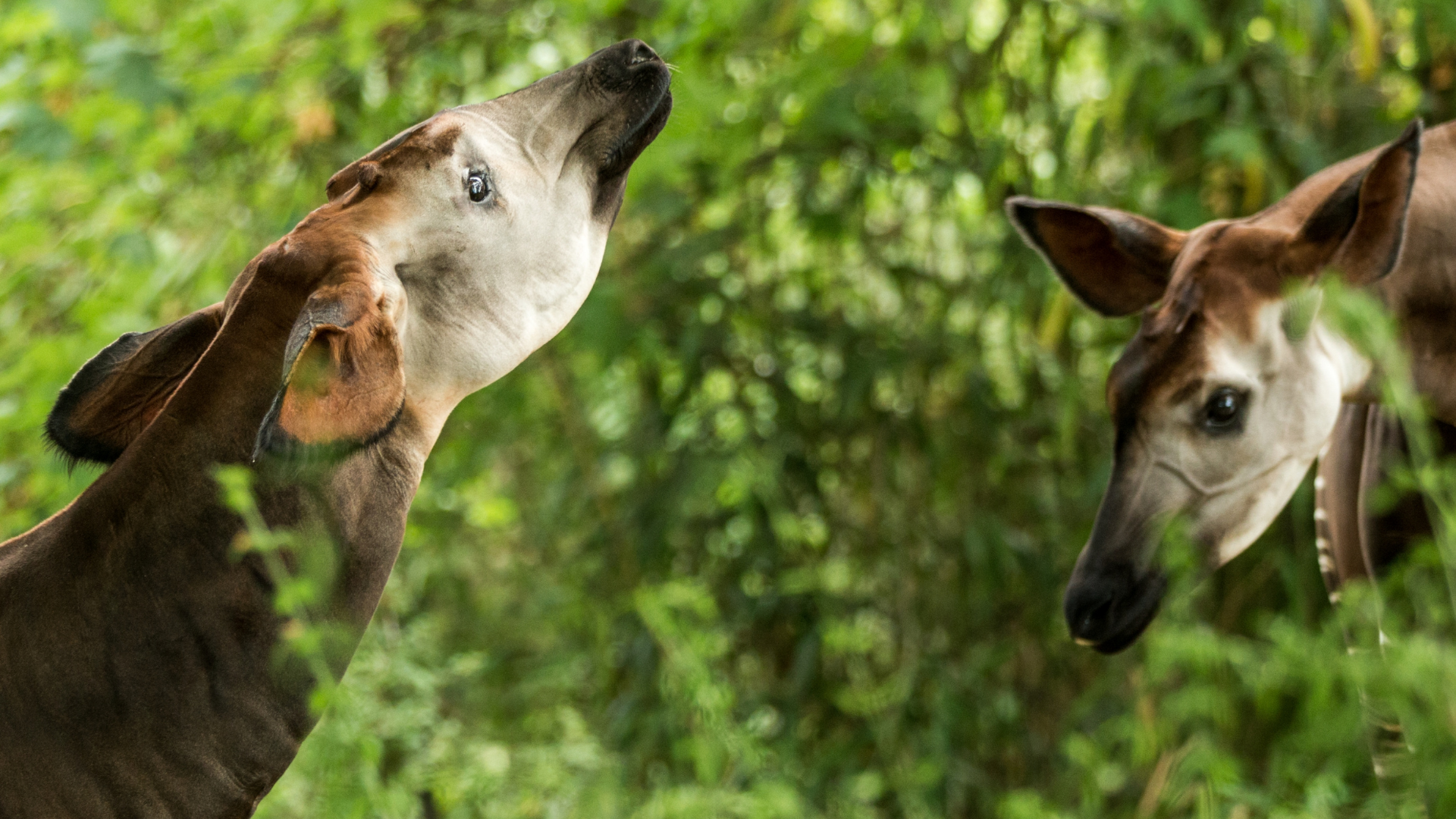
Animals of the Reserve
African Forest Elephant
Loxodonta cyclotis
Critically Endangered (Decreasing)
Forest elephants are smaller than other African elephant species and have five toes in front and four in the back like their Asian forest elephant cousins. They are considered the “mega gardener of the forest” with their ability to spread carbon-capturing trees through their dung.
African Leopard
Panthera pardus pardus
Vulnerable (Decreasing)
Leopards are the only natural predator of okapi. However due to their large stature, okapi are typically only hunted as a last resort. Instead, leopards will prey on duikers, reptiles, rodents, and even buffalo and baboons. These nocturnal hunters can run up to 58 miles per hour and leap 6 meters through the air.
African Forest Buffalo
Syncerus caffer nanus
Near-Threatened (Decreasing)
This sub-species of the African buffalo rarely leaves the forest canopy. They feature short, backward curved horns with males’ being more prominent than females. They will travel in small herds between 3-30 typically consisting of one to two bulls and the rest females and juveniles. These buffalos will wallow in mud for protection from the heat!
Image courtesy of Wildlife Conservation Society
African Grey Parrot
Psittacus erithacus
Endangered (Decreasing)
The largest parrot in Africa, “African greys” are among the smartest birds in the world, possessing the cognitive ability of a 5-year-old child. These parrots possess numerous intriguing characteristics including monogamous mating for life and pure altruism - helping other members of their species without expecting anything in return.
Red River Hog
Potamochoerus porcus
Least Concern (Decreasing)
Red river hogs use their snouts to burrow for food. These omnivores will eat roots, seeds, grasses, insects, carrion, and even elephant dung! They are the smallest of the African pigs and nocturnal in nature. Red river hogs can sometimes be found following chimpanzee troops in search of dropped food.
Chimpanzee
Pan troglodytes
Endangered (Decreasing)
Chimpanzees are highly social animals, often living in communities of several dozen. They are incredibly intelligent, having been observed using tools frequently. Chimps will build nests in trees to sleep in. They are omnivores eating anything from seeds and leaves to small monkeys and antelope. It is thought chimps and humans share a common ancestor some 13 million years ago!
Bongo
Tragelaphus eurycerus
Near-Threatened (Decreasing)
Bongos feature prominent long spiraling horns that can grow up to three feet (1 meter) tall! Bongos share much in common with okapi. They can identify each other based on their markings, live solitary lives except when seeking a mate or with a child, and consume minerals to supplement their herbivore diet. Leopards are their only natural predator, but their large stature makes them unlikely targets.
Image courtesy of Wildlife Conservation Society
Duiker (Blue & Yellow-backed)
Philantomba monticola & Cephalophus silvicultor
Least Concern & Near-Threatened (Decreasing)
The name duiker comes from the Afrikaans word duik or Dutch duiken both meaning “to dive”. These small antelopes are known to “dive” into underbrush when startled. Duiker are one of the more prominent mammalian species in the Ituri Forest and because of their smaller size are often the prey to leopards, chimpanzees, and humans alike. They are solitary and shy herbivores feeding on plants and fruit.
Black and White Colobus
Colobus guereza
Least Concern (Decreasing)
Colobus monkeys got their name from the Greek word for “mutilated” because unlike other monkeys, their thumbs are virtually non-existent. What one would typically consider a defect, gives them a unique advantage in the trees as they use the rest of their fingers like hooks to swing from branch to branch in the rainforest’s vast canopy. They use their tails like rudders to navigate the maze of branches. Colobus monkeys are herbivores, and rarely leave the safety of the trees. All of the water they need is obtained from the fruits they eat, dew on leaves, and hollows in trees.
Okapi
Okapi johnstoni
Endangered (Decreasing)
The okapi is the namesake of the Okapi Wildlife Reserve. Despite their similar appearance to a zebra, they are actually the only living relative to the giraffe. Each okapi’s stripes are entirely unique to them and it’s thought they can use these stripes to identify one another. You can learn more about okapi on our page dedicated to them!

Make a Contribution
Support Okapi Conservation Project today and help protect the endangered okapi and their rainforest home.









